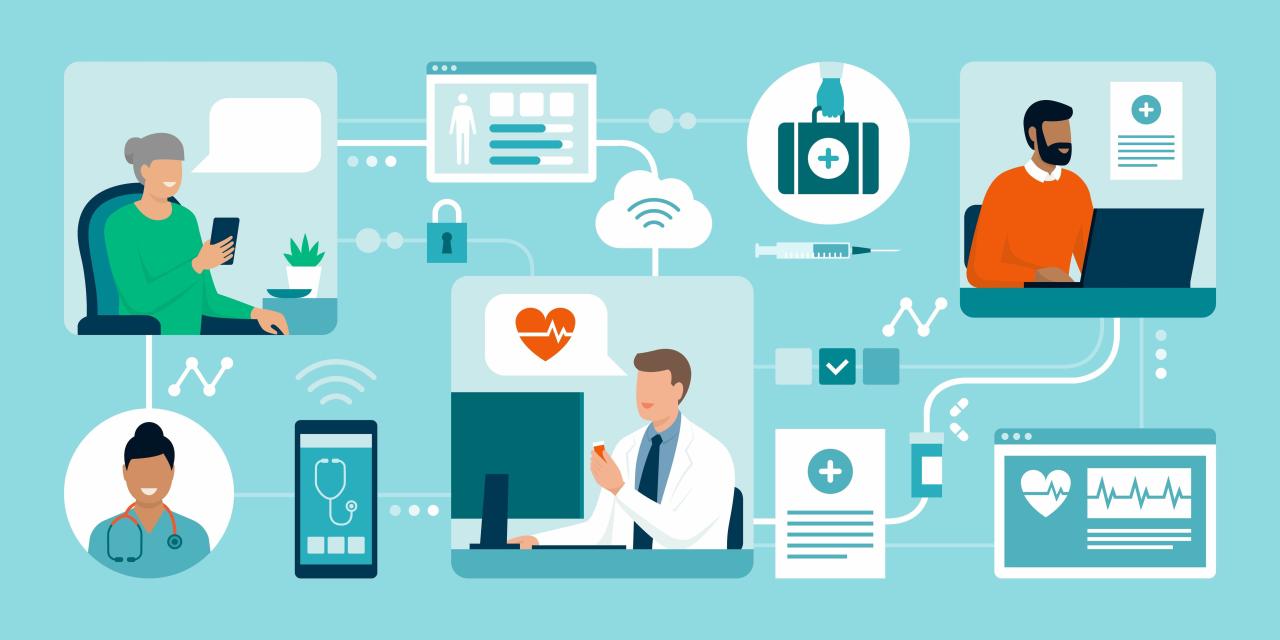

How Technology is Enhancing Public Health
The WHO defines public health as "the art and science of preventing disease, prolonging life, and promoting health through the efforts and choices of society, organizations, public and private, communities, and individuals". In recent years, technology has played a significant role in enhancing public health, transforming the way healthcare services are delivered, and improving health outcomes. This article will explore the various ways in which technology is enhancing public health, and how it is revolutionizing the healthcare industry.
Electronic Health Records (EHRs)
One of the most significant advancements in public health has been the introduction of Electronic Health Records (EHRs). EHRs are digital versions of a patient’s medical chart, containing all their medical history, test results, medications, and other relevant health information. EHRs have replaced traditional paper-based records, making it easier for healthcare providers to access and share patient information.
EHRs have numerous benefits, including:
- Improved accuracy and completeness of patient information
- Enhanced patient safety through reduced medication errors and improved diagnosis
- Better coordination of care between healthcare providers
- Increased efficiency and reduced administrative costs
- Enhanced patient engagement and empowerment through secure online access to their health records
Telemedicine
Telemedicine, also known as telehealth, is the use of digital technologies to provide remote access to healthcare services. Telemedicine has revolutionized the way healthcare services are delivered, particularly in rural and underserved areas where access to healthcare services is limited.
Telemedicine has numerous benefits, including:
- Increased access to healthcare services for remote and underserved populations
- Reduced healthcare costs through reduced hospitalizations and ER visits
- Improved health outcomes through timely interventions and monitoring
- Enhanced patient satisfaction and engagement through convenient and accessible care
Mobile Health (mHealth)
Mobile Health (mHealth) refers to the use of mobile devices, such as smartphones and tablets, to provide healthcare services and promote healthy behaviors. mHealth has become increasingly popular, with numerous health-related apps, wearables, and sensors available to track health metrics, monitor chronic conditions, and provide personalized health advice.
mHealth has numerous benefits, including:
- Increased access to healthcare services and health information
- Improved health outcomes through real-time monitoring and interventions
- Enhanced patient engagement and empowerment through personalized health advice and tracking
- Reduced healthcare costs through early detection and prevention of chronic conditions
Artificial Intelligence (AI) and Machine Learning (ML)
Artificial Intelligence (AI) and Machine Learning (ML) are transforming the healthcare industry, enabling healthcare providers to analyze large amounts of data, identify patterns, and make predictions. AI and ML have numerous applications in public health, including:
- Predictive analytics to identify high-risk patients and prevent hospitalizations
- Personalized medicine and treatment planning through genomic data analysis
- Identification of disease outbreaks and tracking of epidemics through data analytics
- Development of personalized health advice and interventions through ML algorithms
Wearable Devices and Sensors
Wearable devices and sensors, such as fitness trackers and smartwatches, have become increasingly popular, enabling individuals to track their physical activity, sleep patterns, and other health metrics. These devices have numerous benefits, including:
- Increased physical activity and exercise through gamification and goal-setting
- Improved sleep quality and duration through personalized sleep advice
- Enhanced stress management and mental well-being through mindfulness and meditation tracking
- Early detection of chronic conditions, such as diabetes and hypertension, through real-time monitoring
Disease Surveillance and Outbreak Detection
Disease surveillance and outbreak detection are critical components of public health, enabling healthcare providers to identify and respond to disease outbreaks in real-time. Technology has enhanced disease surveillance and outbreak detection through:
- Advanced data analytics and machine learning algorithms to identify patterns and trends
- Real-time monitoring of social media and online data to detect disease outbreaks
- Enhanced collaboration and communication between healthcare providers and public health officials
- Development of personalized public health interventions and messaging through targeted communication
Public Health Informatics
Public Health Informatics (PHI) is the application of information technology to improve public health practice, research, and policy. PHI has numerous benefits, including:
- Enhanced data collection, analysis, and visualization to inform public health decision-making
- Improved communication and collaboration between healthcare providers and public health officials
- Development of personalized public health interventions and messaging through targeted communication
- Increased efficiency and reduced administrative costs through automation and streamlining of public health workflows
Challenges and Limitations
While technology has enhanced public health, there are numerous challenges and limitations to consider, including:
- Data privacy and security concerns, particularly with regard to EHRs and mHealth data
- Health disparities and unequal access to technology, particularly in low-income and rural communities
- Limited interoperability and integration of healthcare systems and technologies
- Regulatory frameworks and policies governing the use of technology in public health
Conclusion
In conclusion, technology has revolutionized the healthcare industry, transforming the way healthcare services are delivered, and improving health outcomes. Electronic Health Records, telemedicine, mobile health, artificial intelligence, and machine learning are just a few examples of how technology is enhancing public health. While there are challenges and limitations to consider, the benefits of technology in public health are undeniable, and continued investment and innovation are critical to improving health outcomes and reducing healthcare costs.




